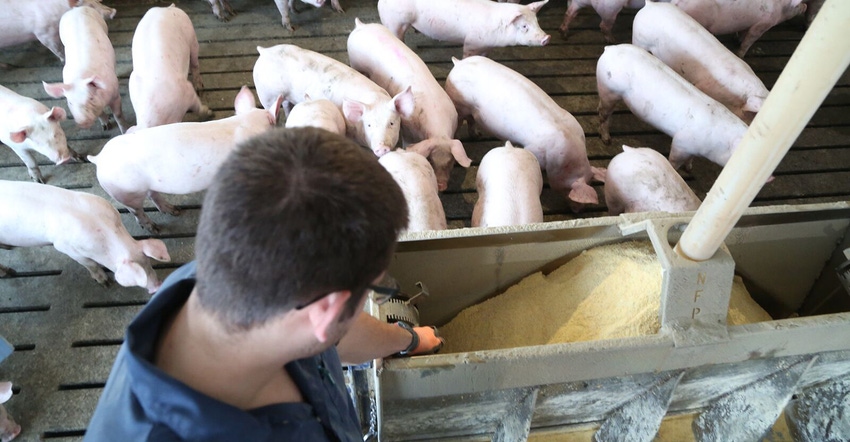NPPC outlines eligibility, payment calculations for CFAP
Beginning May 26, the USDA, through FSA, will accept applications from producers who have suffered losses.

Further details of the Coronavirus Food Assistance Program, which will provide up to $16 billion in direct payments to America's farmers and ranchers impacted by the coronavirus pandemic, were announced today. Cody McKinley, assistant vice president with the National Pork Producers Council, said there will be some eligibility constraints, but will be similar to the Market Facilitation Program requirements.
"There are some eligibility requirements here and a payment limitation of $250,000 per person, and that is for all commodities," McKinley said Tuesday in a National Pork Board COVID-19 webinar. "The eligibility requirements are similar to those that were rolled out in the MFP program, adjusted gross income limitations of $900,000, unless at least 75% of that income is derived from farming and ranching."
Livestock eligible for CFAP include cattle, lambs, yearlings and hogs. The total payment will be calculated using the sum of the producer's number of livestock sold between Jan. 15 and April 15, multiplied by the payment rates per head, and the highest inventory number of livestock between April 16 and May 14, multiplied by the payment rate per head.
Beginning May 26 until Aug. 28, the USDA, through the Farm Service Agency, will accept applications from agricultural producers who have suffered losses.
"There's going to be some structure to this and it'll have to be worked through with your FSA offices, but if you are an SIP contributor, you should have in your inbox a complete summary and guide to filling out these forms from NPPC," McKinley said.
In a statement issued Tuesday, the NPPC said, "We appreciate that the USDA's CFAP program announced today appears that it will reach more producers than the USDA's relief program for hog farmers who suffered losses due to trade retaliation. We are assessing the CFAP program and the extent of its impact on pork producers. The financial and emotional crisis facing U.S. pork producers is overwhelming. They will lose more than $5 billion collectively for hogs processed into the food supply this year. And, because of pork harvest plant closures and slowdowns, they also face staggering costs associated with hogs that can't enter the food supply. While harvest facility capacity is improving, it's unclear when full capacity will be restored. Until additional capacity is restored, we will continue to have market-ready hogs back up on farms. Those hogs can become too large to be safely handled and accommodated by harvest facilities. NPPC continues to advocate for solutions to sustain pork producers through a crisis that, without additional government intervention, will likely lead to consolidation and contraction in a highly competitive farm sector."
In addition to CFAP, USDA's Farmers to Families Food Box program is partnering with regional and local distributors, whose work forces have been significantly impacted by the closure of many restaurants, hotels and other food service entities, to purchase $3 billion in fresh produce, dairy and meat and deliver boxes to Americans in need.
"America's farming community is facing an unprecedented situation as our nation tackles the coronavirus. President Trump has authorized USDA to ensure our patriotic farmers, ranchers and producers are supported and we are moving quickly to open applications to get payments out the door and into the pockets of farmers," said USDA Secretary Sonny Perdue. "These payments will help keep farmers afloat while market demand returns as our nation reopens and recovers. America's farmers are resilient and will get through this challenge just like they always do with faith, hard work and determination."
About the Author(s)
You May Also Like





